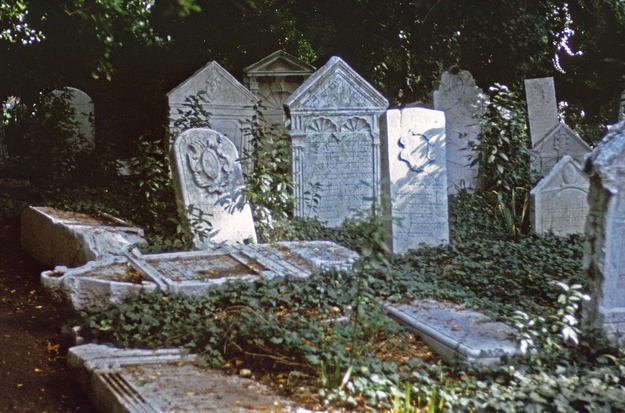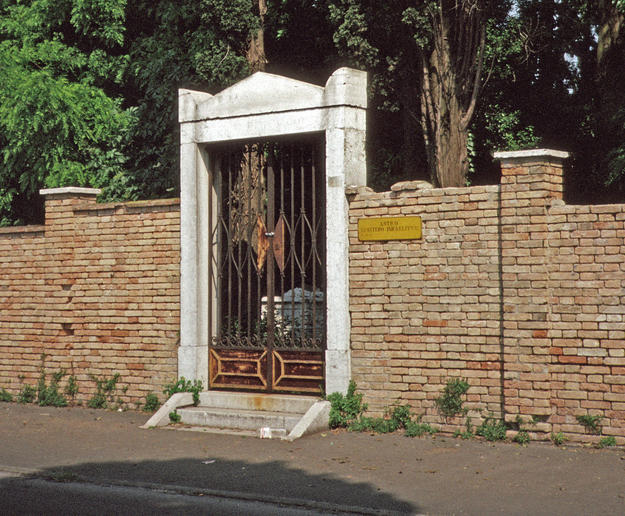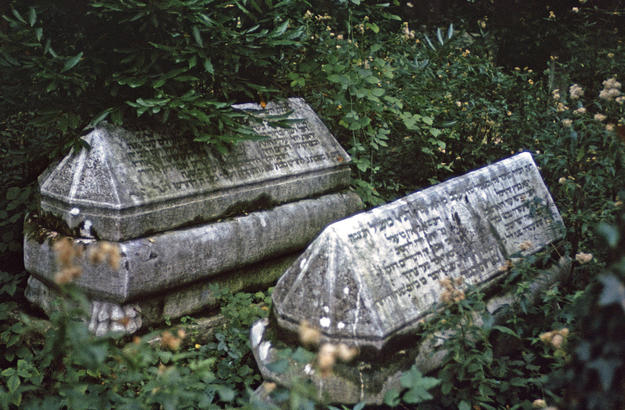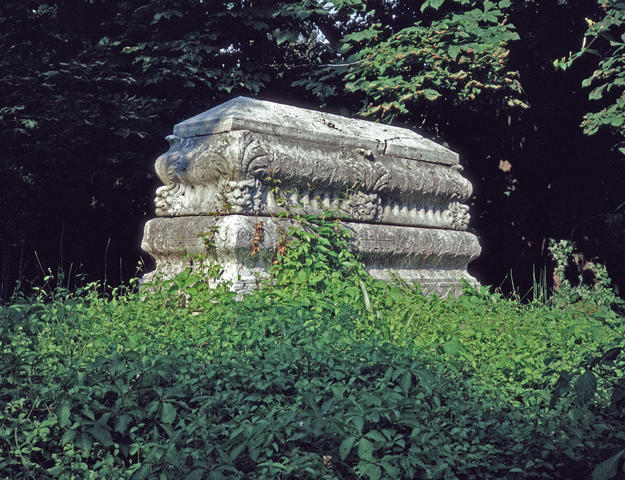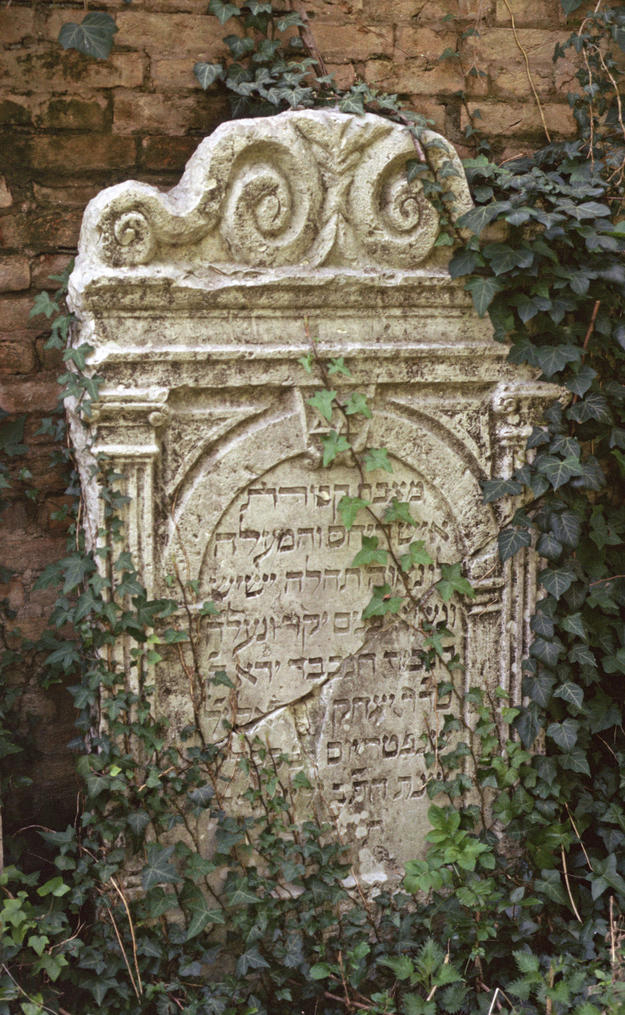Jewish Cemetery on the Lido
Background
In 1386 the Venetian Republic granted its Jewish community land for a cemetery at San Nicolò on the Lido, the thin strip of land separating the Venetian lagoon from the Adriatic Sea. The cemetery was gradually enlarged and eventually enclosed, for both aesthetic and protective reasons, by a tall hedge. The community within the Ghetto Nuovo consisted of immigrants and refugees from a wide geographic area. After 1492 and the expulsion of the Jewish community from Spain, many Jewish families from the Iberian peninsula arrived in Venice. As a result, there are a variety of tombstone engravings, with inscriptions in Hebrew, Spanish and Portuguese, often denoting country of origin; stone-carved coats of arms or family emblems, like the jug and basin or blessing hands (the symbol of the Levis and Coens, respectively) also indicate genealogical provenance. Similarly, stylistic differences in the gravestones’ architecture reflect their dates of construction, earlier markers tending to be less elaborate and later ones, like the sarcophagi favored in the 18th century, being more ornately decorated.
How We Helped
In the summer of 1994, WMF began efforts to document and restore the neglected Jewish Cemetery at San Nicolò on the Lido. WMF’s work at the cemetery largely consisted of identifying and documenting problems with the upkeep of the site, calling for increased attention to its restoration, and proposing a list of possible improvements. These included clearing of excess vegetation, which prevented an accurate analysis of existing site features and posed a potential threat to graves and gravestones; developing a complete site plan for the cemetery, including boundaries, walls, paths, stones, trees, etc.; examining existing masonry and metalwork; and cataloging grave markers. WMF’s early endeavors resulted in continued efforts by Save Venice and the government of the Regione Veneto, which eventually realized many of the goals first set out in WMF’s 1994 plan.
Why It Matters
WMF’s work at the Jewish Cemetery on the Lido reflects the organization’s long-standing commitment to the preservation of cultural and aesthetic contributions made by the Venetian Jewish community. The Jewish Cemetery (like the Ghetto Nuovo, another area in which WMF has worked extensively) embodies one aspect of the history of the Jewish people in Venice from the 14th century onwards. The site is also worth conserving for an entirely different reason: it is a uniquely serene place within the bustling city, known for its tranquil beauty and celebrated, fittingly, by writers like Byron, Shelley, and Goethe.

